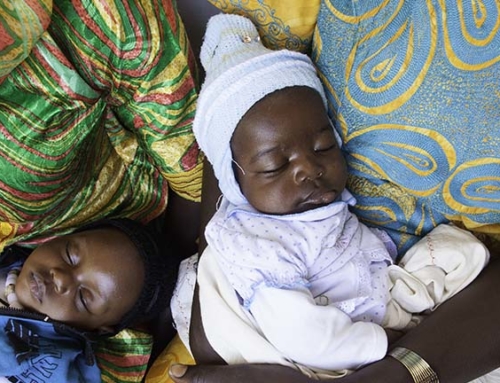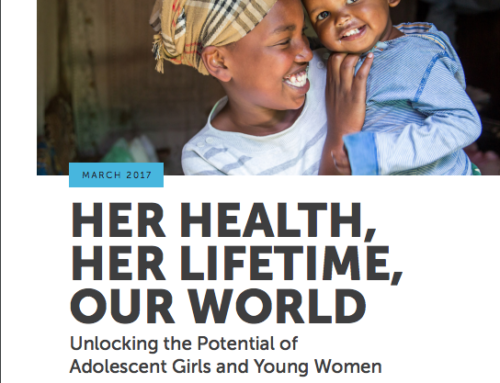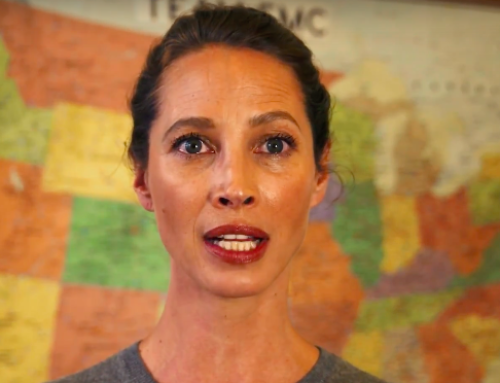On a recent trip to Ghana with representatives of the CSIS Task Force on Women’s and Family Health, I had a chance to visit La General Hospital in the capital city, Accra, which is in the southern part of the country. La General is a polyclinic serving a population of over 200,000 in a coastal district that was the epicenter of a 2014-2015 cholera outbreak. Health care providers at the hospital offer general medical and surgical services, as well as family planning and HIV counseling and testing. They also provide antenatal care, and deliver about 300 babies per month. The hospital has a small neonatal intensive care unit (NICU) as well.
It was just outside the NICU that I met a young woman named Esther. Seated in a plastic chair in a warm room with half a dozen other mothers, Esther told me that she was waiting to see her young son, who was born prematurely two weeks earlier. Because he had trouble breathing and could not breastfeed on his own at the time of his birth, Esther’s son remained in an incubator in the NICU, a separate, climate-controlled room where visitors who wished to enter were required to don special shoes, masks, and gowns to protect the unit’s most vulnerable babies from infection. As there was nowhere for her to stay at the hospital, Esther returned each day to see her baby boy, expressing breast milk at regular intervals to provide nourishment for him. She was hopeful that he might be discharged soon, but she said hospital staff had not yet told her when that might be.
Esther’s experience with the NICU at La General reflects the success Ghana has experienced in addressing newborn health issues, and highlights some of the challenges that have prevented Ghana from making even greater progress, particularly in the more remote, northern part of the country. According to recent figures, in Ghana, newborn deaths account for 46% of all deaths among children under the age of 5, with a national newborn mortality rate of 28 per 1,000 live births. Premature birth is a leading cause of newborn death, with one in seven babies born before 37 weeks of gestation. The Ghanaian government, recognizing that national efforts to reduce the mortality of children under the age of 5 had overlooked high mortality among newborns in Ghana, committed in 2014 to the global Every Newborn Action Plan and launched a four-year National Newborn Health Strategy and Action Plan. Thanks to programs that now encourage more women to seek antenatal care and to deliver their babies with a skilled attendant at health care facilities, the national newborn mortality rate has declined. However, limited services at community-level clinics also often mean that staff at institutions offering more comprehensive care, like La General, are overwhelmed by women arriving in the throes of a complicated delivery. Poverty, distance from a health facility, and inadequate awareness of pregnancy challenges also contribute to continued high newborn mortality. While the mortality rate in Accra is 20 per 1,000, it is twice that in regions such as Upper West and Volta, where the population is less educated and more dispersed.
Ghana’s success in reducing newborn mortality by building capacity at urban referral facilities while expanding community-level health services shows that it is possible to make progress if the right pieces of the puzzle.
As the CSIS Task Force is focused on opportunities for enhancing U.S. engagement on global reproductive, maternal, neonatal and child health issues, the delegates to Ghana were particularly keen to learn about how staff at La General are overcoming challenges with respect to newborn health. Some very apparent constraints included having just one ambulance available to bring laboring women to the facility for emergency obstetric services; a limited number of beds for women in labor; a very high rate of caesarean sections due to the considerable number of emergency referrals from lower-level facilities; and a shortage of suction devices to help newborns breathe. We also learned how the United States government is supporting the Ghana Health Service (GHS) in Accra, and in several other regions of the country, in strengthening emergency response and triage procedures, data collection and analysis, and supply chain management, as well as providing pre-service training for midwives and community nurses.
To address acute regional disparities in newborn survival, the U.S., along with other donors and bilateral partners, has begun to shift its support for health programs in Ghana to the Northern Region, a vast and impoverished area where health and social indicators have historically lagged behind those in the southern part of the country. At 6.6 children per woman, the total fertility rate in Northern Region is high, and use of family planning is low, although the contraceptive prevalence rate has risen to 11% in recent years. In many districts there is a paucity of trained midwives, and it can be difficult for community health nurses to visit patients living in remote settlements because there are no cars or motorbikes available to them, and the terrain is difficult to cover on foot. To facilitate the population’s access to health services at the local level, Ghana has established Community-based Health Planning and Services (CHPS) compounds in remote areas, and some are providing delivery services. However, not all CHPS are fully functional, and with limited places for staff to live, it has been difficult to attract trained health providers to work in the most distant settings.
During our visit to health posts in Northern Region, the delegation learned that these challenges related to human resources and accessibility are just part of the problem when it comes to protecting newborns. At local CHPS compounds, such as the one we toured in the community of Cheshegu, a lack of data-capturing tools, such as antenatal care registers, as well as morbidity and mortality registers, can limit providers’ ability to track the population’s use of services or assess progress in meeting specific targets related to newborn health. At the Nyankpala Health Center, in Tolon District, just outside the Northern Region’s capital city, Tamale, we learned that the facility is set up for labor and delivery but that newborns with health complications must be referred to the Tamale Central Hospital or the Tamale Teaching Hospital for care. Both facilities have NICUs, with the one at Tamale Teaching Hospital having space for 28 neonates.
The Tamale Teaching Hospital was established in 1974 and serves as a teaching and referral facility for all three regions of northern Ghana. Over the past four years it has made achieving excellence in maternal and child health services a priority, and we were told that the facility had reduced newborn deaths by an estimated 30 to 40 per cent. Through a seven-year partnership with the neonatology department at the University of Louisville, in Kentucky, the Teaching Hospital has developed programs to enable medical students at the nearby University of Development Studies (UDS) to stay in Tamale to do clinical work in neonatology, instead of having to travel to Accra for additional training. On the day in early June when we visited, several students were gathered in the middle of a room dedicated to the NICU’s newest and most vulnerable arrivals; the room’s bright lights and the quiet hum of equipment belied the struggle for life within the incubators arranged around the perimeter of the room. In one corner incubator we observed the very smallest resident, a four-day old newborn, weighing not even 700 grams at birth, whose tiny body was obscured by tubes and equipment.
The mothers of babies in the Tamale Teaching Hospital NICU may visit daily to breastfeed, or express breast milk, in accordance with Ghana’s policy that babies should be breastfed exclusively until they are six months old, but, as at La General in Accra, there is nowhere at the hospital for them to stay. For mothers who have traveled long distances to deliver and seek care for their newborns, this presents an additional hardship, and staff at every level of the health system emphasized to the CSIS delegation the importance of strengthening outreach and services for mothers and newborns in remote and peripheral areas in order to realize further reductions in newborn mortality. Looking ahead, one staff physician also observed that even if the NICU patients progress well and go home, they will face another challenge at age six months, when they will begin to transition from exclusive breastfeeding to complementary feeding with solid foods. Many families in Northern Region struggle with food insecurity, and within the household the youngest children frequently get the least and lowest quality food. Stunting rates in the region are high, with more than one-third of children in Northern Region considered to be short for their age. During its recent visit, the CSIS delegation had the chance to learn about new U.S.-supported programs integrating small-scale agriculture, women’s savings and loan programs, and nutrition awareness in an effort to reduce these numbers.
A report reflecting the full range of the delegation’s observations and recommendations regarding U.S. engagement on reproductive, maternal, neonatal and child health in Ghana will be forthcoming later this summer. Ghana’s success in reducing newborn mortality by building capacity at urban referral facilities while expanding community-level health services shows that it is possible to make progress if the right pieces of the puzzle — political will, technical capacity, bilateral cooperation, and multi-sector engagement, among others — are in place. The U.S.-Ghana partnership on strengthening the health system and integrating programs related to agriculture, nutrition, and family wellbeing in the most disadvantaged regions of the country will also offer important lessons for other countries’ efforts to protect the health of their newest, and most vulnerable, citizens.






